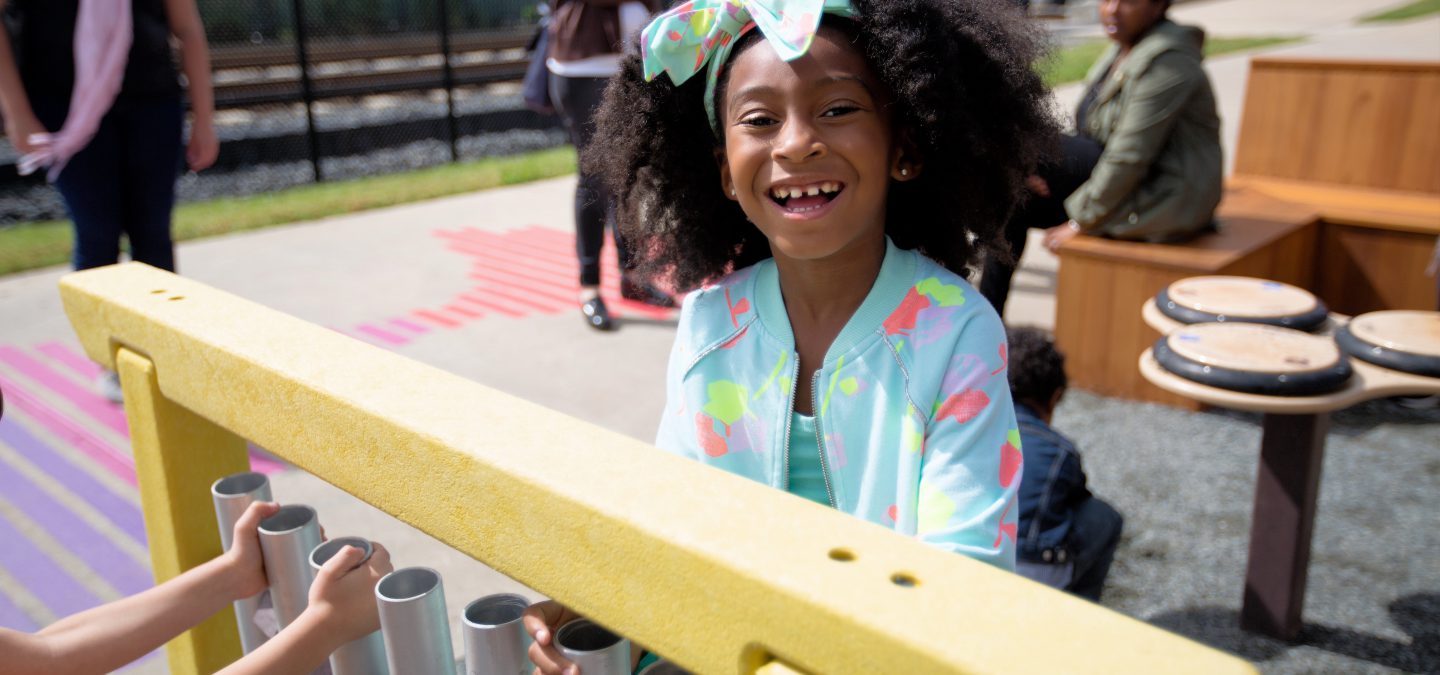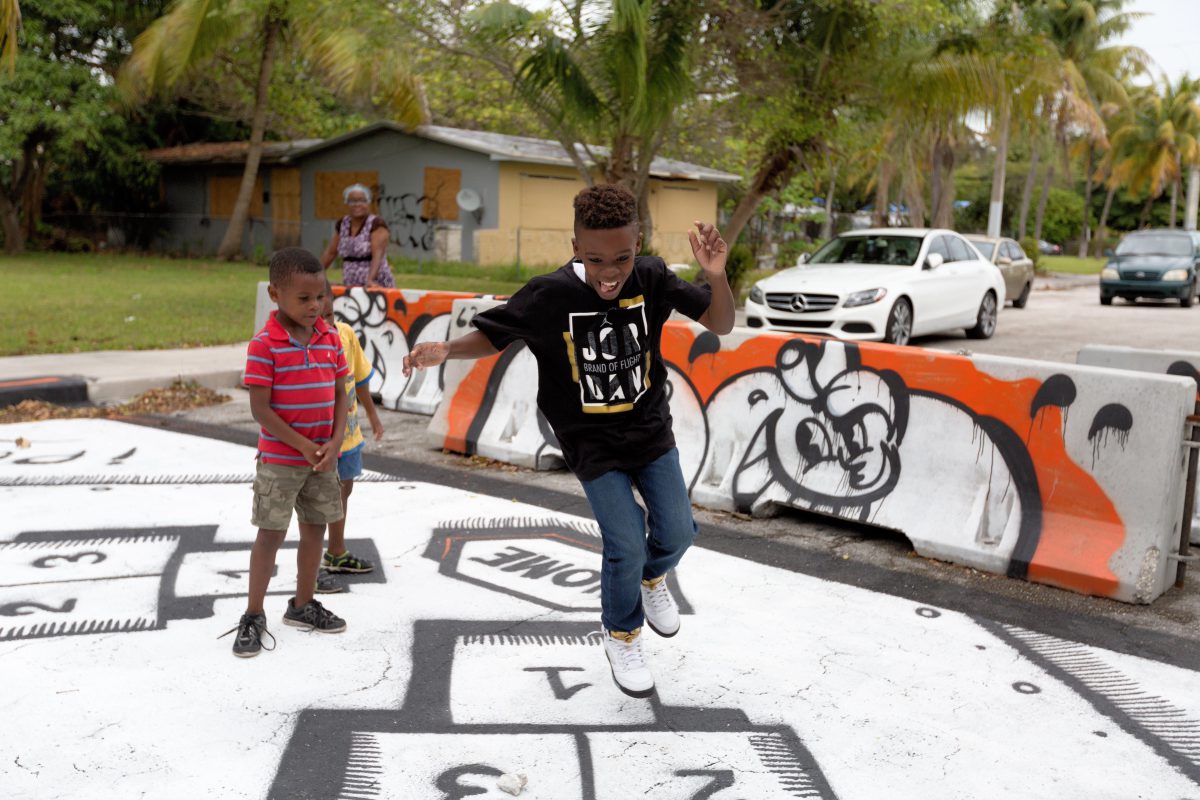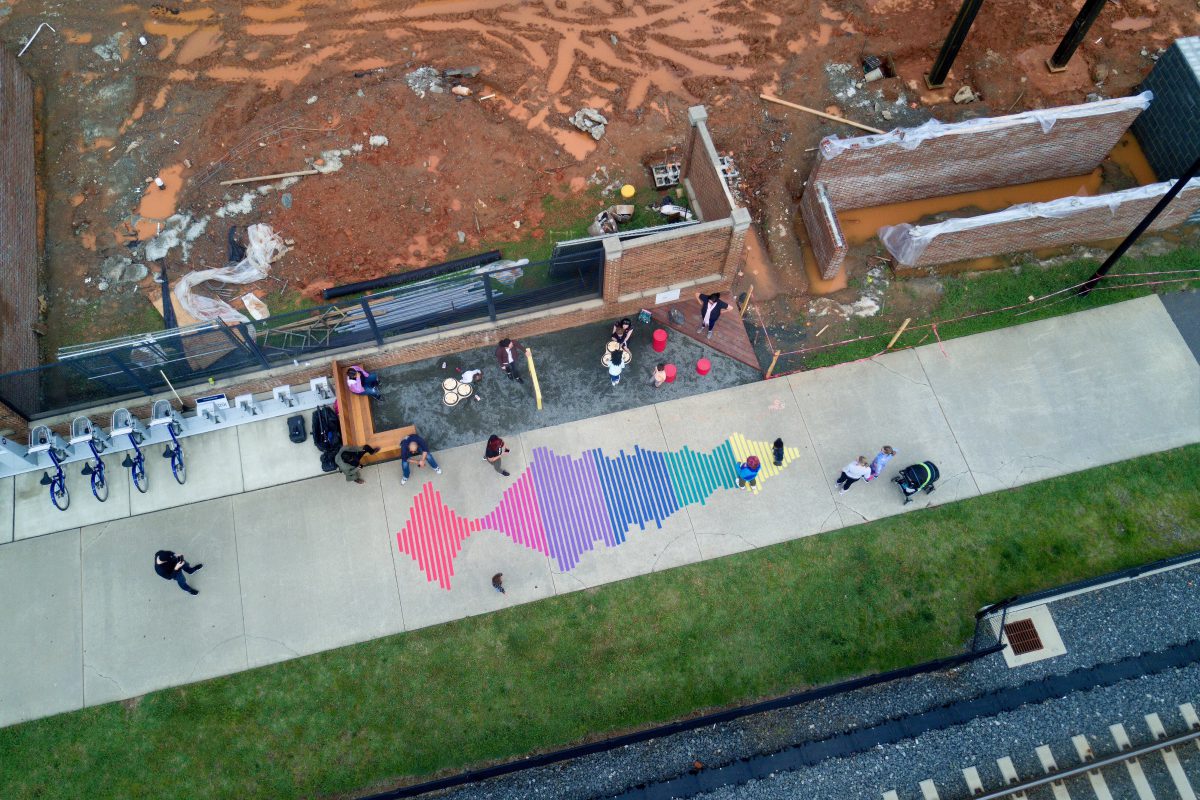
Keep up with our latest news and projects!

At KaBOOM!, we know that our cities’ futures are inextricably tied to the success of our kids. Unfortunately, we are in danger of unintentionally designing kids and families out of that future. Though cities have made great strides to increase livability factors, as budgets tighten, kid-focused amenities are usually cut first. When this happens, it has a disproportionate impact on kids growing up in under-resourced communities.
Cities are at risk of becoming unaffordable to families and inaccessible in terms of offering great schools and places to play. But we can change that, one community at a time. By working with partners across the U.S., KaBOOM! has sought to increase the number of playgrounds, enhance equitable access and make play a part of everyday life. When we design with kids in mind, everyone benefits.
Ensuring that kids get the daily active play they need requires tackling both structural and behavioural barriers to play. To date, much of the work has addressed structural barriers – increasing the numbers of playgrounds, and providing equitable access, especially for kids living in poverty.
Playgrounds are absolutely essential, as they create joyful oases throughout cities and neighbourhoods. Given the many structural barriers, particularly for kids growing up in under-resourced communities, it is also critical to find innovative ways to transform cities’ infrastructure to address behavioural and environmental barriers and make play an easier choice, in unexpected places, every day.
That’s the approach of “Play Everywhere” – incorporating play where people already are or have to be. Because family life is full of hassle factors, particularly for families living in under-resourced communities, there’s never enough time in the day for play – let alone a safe, convenient place nearby. This problem requires a creative solution: integrating play into daily routines and reimagining everyday spaces such as streets and sidewalks, bus stops, business plazas, parking lots and civic spaces as mini play destinations, or “PLAYces.”
Play Everywhere projects bolster the “plinth” of a city by incorporating kid-friendly design and structures into ground floor elements, inviting kids to play along the way to destinations. Kids experience the city in a completely different way than adults, so incorporating PLAYces into the plinth ensures that kids are not forgotten when planning for cities at eye level.

Through an evaluation in partnership with Gehl, we discovered key findings about the elements of success in Play Everywhere projects. First, installations should be located near existing kid hubs or existing hardware and software dedicated to kids and families. It is important to meet users where they already spend time, and along commonly-used walking paths. Visibility and safe access are also critical.
Second, assess your city’s orgware and its ability to bring kids into the creative process early. Allowing kids to be a part of the idea formation results in installations that respond to demand, prompt buy-in and develop pride of place. Relatedly, this engages the community and creates incentives for prolonged use and care.
Third, emphasise flexibility and interaction by encouraging kids to try something new. Keeping designs open-ended sparks imagination. Modularity, challenges and games preserve excitement and adaptability while inspiring wonder.
Finally, be sure to communicate that it’s okay to play! Eye-catching and intuitive design paired with clear signage encourages play and facilitates behaviour change. Bold designs show rather than tell and provide a welcome contrast to the everyday environment.

There’s no specific formula for a great Play Everywhere space, but a number of unique factors contribute to the success of each project. Elements related to “life” – kids’ actions and behaviours; “space” – the location and context; and “installation” – the quality and design of the project – dictate what works. We discovered nine key themes based on a thorough evaluation conducted of nine different installations in cities ranging from Richmond, California to Philadelphia, Pennsylvania.
– Well-maintained, defined as durable materials, design quality, cleanliness and maintenance that is accounted for.
– Kid-focused, defined as designed for kids, inspiring, creates a sensory experience and invites people to stop.
– Flexible, defined as able to change and transform and usable for multiple age groups.
– Programmed, defined as the presence of programming and community events.
– Comfort, defined as protection from weather elements, provides a sense of safety, availability of seating and activities for adults.
– Kids nearby, defined as universal access, connections to transport, proximity to kids and amenities, visible and eye-catching.
– Community connection, defined as visitor diversity, unifying, community interaction and sense of identity.
– Engagement, defined as community engagement, involvement of kids and responds to local needs.
– Play, defined as brings more play to kids, interactive, opportunities for wonder and provides challenges.
This article belongs to a series of stories about the city at eye level for kids! You can access the full book online in PDF or pre-order your hardcopy to be delivered to your home.
Get your book here